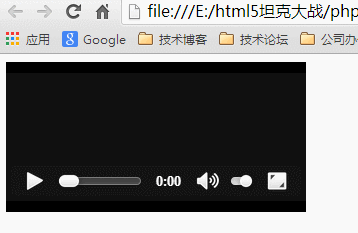1. Video playback


 What are the production methods of html5 animation production?
What are the production methods of html5 animation production?
 The difference between HTML and HTML5
The difference between HTML and HTML5
 Which platform can I buy Ripple coins on?
Which platform can I buy Ripple coins on?
 What to do if php deserialization fails
What to do if php deserialization fails
 The difference between workbook and worksheet
The difference between workbook and worksheet
 Telecom cdma
Telecom cdma
 js gets current time
js gets current time
 How to increase fans of Douyin quickly and effectively
How to increase fans of Douyin quickly and effectively




